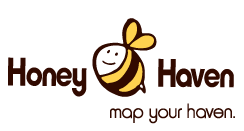25 Nov Feed the bees?
Don cooking hard candy for his bees. A completed brick is in the foreground and a wooden candy form is behind the brick.
Feeding honeybees seems like a safe topic, innocent, nothing to get too excited about. And yet, the controversy rages! Various beekeepers have widely varying opinions about feeding. Some consider it a must. Others prefer not to feed at all. And of course, there is every shade of gray between.
As a beekeeper practicing permaculture philosophy, I generally find myself in the “don’t feed” group. However, as with most “rules,” there are exceptions. I follow the permaculture principle of observe and interact.
When I find myself in an exceptional situation and my instinct is that I need to feed, what I feed the bees varies depending on the time of year. This text is intended to describe my way, leaving you to decide what may or may not work for you. My methods are based on the climate here in Colorado. Your choice will vary based on your local climate.
Fact: Bees, like all living things, need both carbohydrates and protein. In nature, the carbohydrate is honey and the protein is bee bread. Humans have found convenient substitutes for both. Which substitutes you choose, or if you choose any at all, is a decision you get to make and a responsibility you must bear.
Feeding through the seasons
First, consider carbohydrates. In spring, the motivation would be to stimulate wax glands to ensure the girls are able to expand comb as they wish. Therefore I would use 1:1 sugar syrup with a bit of Honey-B-Healthy(TM) used according to label directions. Nectar is, or soon will be, abundant so most of the syrup will be consumed by the now living bees — and if they choose to store some, they have plenty of time to fan it down to reduce the moisture content.
In fall, the motivation is to finish over-wintering preparations. Therefore I would use 2:1 sugar syrup, again with a bit of HBH. Nectar is getting scarce and most of the syrup will likely be stored in cells. Time is short to reduce the moisture content and using a thicker syrup gives them a bit of help. In both cases the ratio is sugar:water. You can measure by weight or by volume, this is not an exact science and your choice is not significant to the bees. Dearth in summer may also be a motivation for feeding.
Adjust your recipe according to heat and humidity during this time. High heat or low humidity calls for more water.
Feeding protein (pollen paddies, or equivalent) is motivated by a desire to stimulate brood rearing. As winter wanes, bees should be building up their population such that they have a large workforce ready when the day comes to harvest spring’s abundant nectar flow. Not so in fall. A declining population in fall is normal because the colony needs to limit the number of mouths to feed during the cold weather. That said, there is a limit where declining population may be a bad thing.
Whenever the cluster size falls below the population necessary to maintain temperature (and this will vary as ambient temperature varies), the entire colony will perish. This motivates some beekeepers to feed pollen paddies in fall. This is especially true when the bees will be traveling to Southern California for almond pollination.
Winter feeding presents temperature challenges. Liquids can freeze and, at a minimum, they act as a thermal mass that retains cold. This can actually be a detriment to the honeybees when the liquid is inside the hive. Liquids outside the hive have a reputation for stimulating robbing behavior and cold weather season is a time when the colony is least able to defend against robbing. This is one good reason beekeepers frequently reduce entrances when the weather starts to turn and leave them reduced until nectar is again abundant.
My alternative for winter feeding is hard candy. My recipe includes protein, therefore it is not recommended for before the solstice. However, after solstice, I want to stimulate brood rearing and I have been pleased with the results using this technique. Placing a brick of hard candy over the brood and inside what I call a “tiny super” or “candy super” allows the warmth of the cluster to rise, soften the candy, and be just right for a bite from a hungry worker. The idea is to provide the carbohydrate and protein in a single, non freezable source. You can see the recipe and pictures of the end result here.
I prefer that bees eat what bees have stored for themselves to get through the cold season. They are much smarter than I am about what they need. Still, sometimes I like a little “insurance” to increase my likelihood of arriving at spring with a healthy, thriving colony. That’s when I choose to feed. I feed bees in an effort to save those that have shown good productive attributes and earned the right to be saved from unusual circumstances. Others, I do not feed.


 Don Studinski, dba
Don Studinski, dba